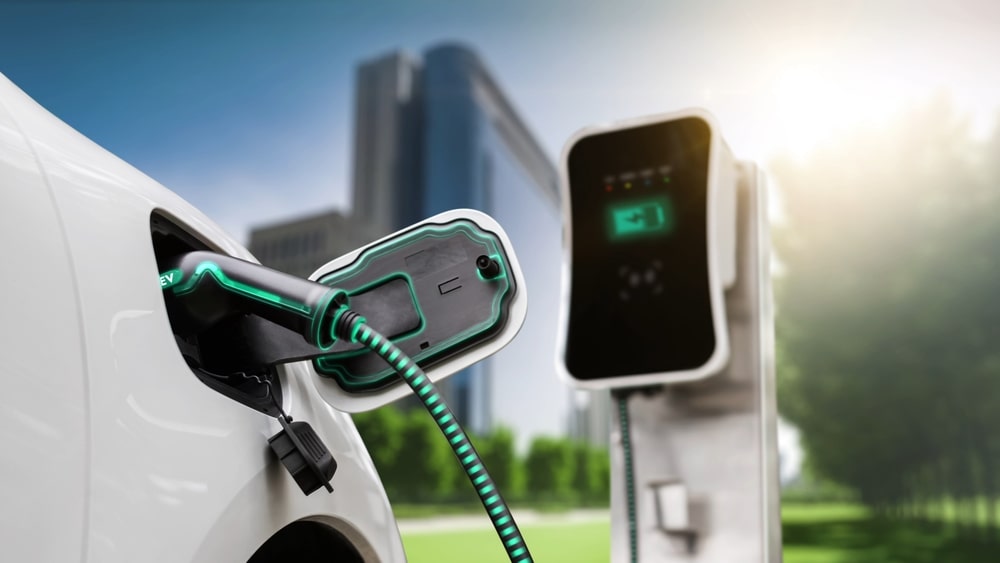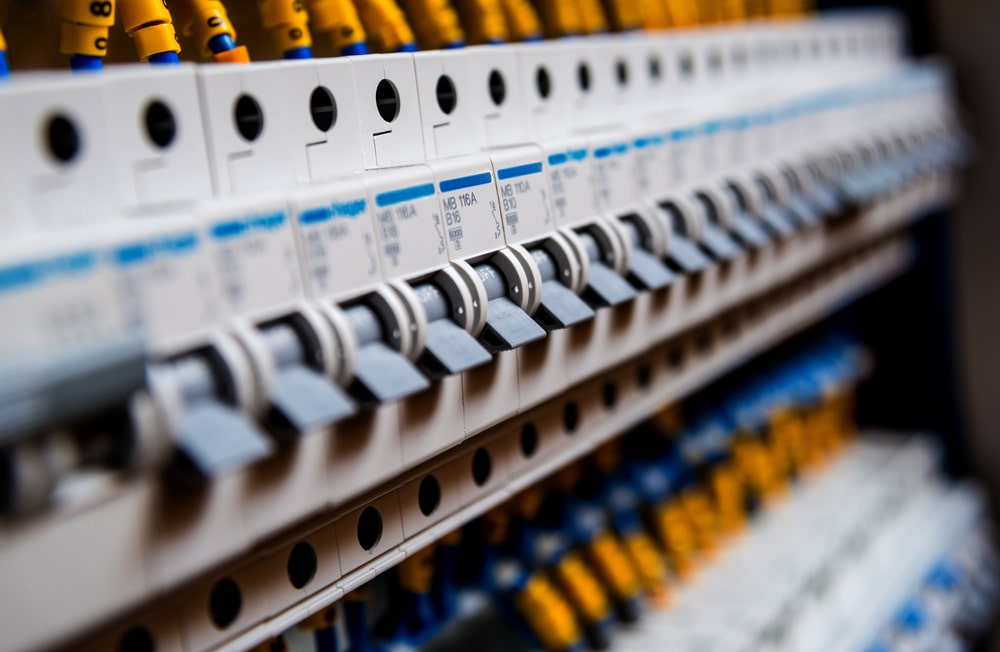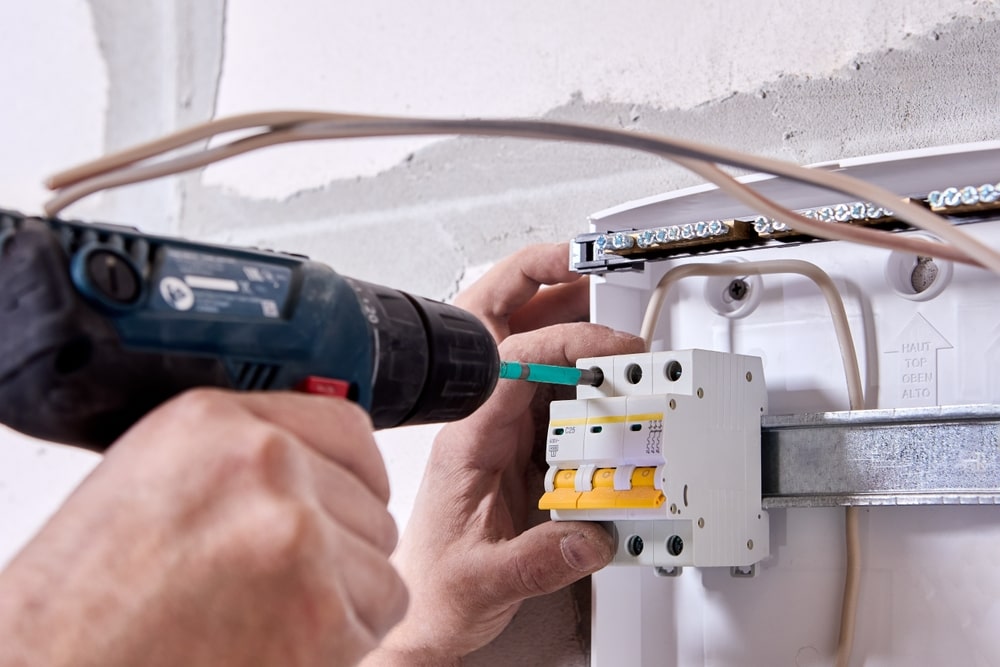As electric vehicles (EVs) become more popular, many homeowners are installing EV chargers for convenience and cost savings. However, a common question arises: does installing an EV charger require an electrical panel upgrade? If your current panel can’t handle the increased load, upgrading is crucial for both safety and efficiency.
At Pelican Coast Electric, we specialize in helping homeowners power their EVs safely and efficiently. In this post, we’ll discuss whether you need to upgrade your electrical panel, what permits may be required, and how long the process takes.
What Is An Electrical Panel, and How Does It Work?
Knowing how your electrical panel functions helps you decide if you need an upgrade.
The electrical panel is your home’s central hub for power distribution. It channels electricity from your utility provider to various circuits. Circuit breakers within the panel protect your home by shutting off power when there’s an overload. However, older or undersized panels may not handle the power demands of an EV charger.

Why EV Chargers Increase Power Demand
EV chargers require high power output, potentially straining your home’s existing electrical system.
Most Level 2 EV chargers need a dedicated circuit that uses between 40 and 60 amps. If your home’s electrical panel doesn’t have enough available capacity, you may experience frequent breaker trips, overheating, or other hazards. To prevent these issues, a panel upgrade may be necessary.
Signs You Need An Electrical Panel Upgrade For Your EV Charger
These are key indicators that your electrical system may need an upgrade before installing an EV charger.
Insufficient Panel Capacity
If your electrical panel is rated for only 100 amps, it may not support both household appliances and an EV charger. Many homes benefit from upgrading to a 200-amp panel to meet modern power demands.
Frequent Breaker Trips
Frequent circuit breaker trips indicate that your system is overloaded. Adding an EV charger can worsen the problem without an upgrade.
Outdated Electrical Panels
Electrical panels over 20-30 years old may not comply with current electrical codes and could pose safety risks. An upgrade brings your system up to modern safety standards.
The Risks of Overloading an Electrical Panel
Overloading your electrical panel by installing an EV charger without adequate capacity can lead to dangerous consequences.
Electrical Fires
An overloaded electrical panel can cause wires to overheat, increasing the risk of electrical fires. Outdated panels with old wiring are particularly vulnerable.
Equipment Damage
A panel that can’t handle high power loads may cause voltage fluctuations. This can damage both the EV charger and other sensitive electrical appliances in your home.
Increased Utility Costs
When your electrical system operates inefficiently due to overloads, your power consumption may increase. Upgrading your panel can help optimize your home’s energy usage and potentially reduce utility bills.

Upgrade Electrical Panel Permit Requirements
Installing an EV charger often requires obtaining permits to ensure your electrical system meets safety codes.
Depending on your local regulations, an upgrade electrical panel permit may be needed if you are increasing panel capacity. Licensed electricians, like those at Pelican Coast Electric, handle this process to ensure compliance with all requirements. Skipping permits could lead to costly fines and safety risks, so it’s essential to work with professionals familiar with local codes.
Benefits Of Upgrading Your Electrical Panel
Upgrading your panel offers more than just EV charging compatibility.
Improved Safety
Modern electrical panels reduce risks of electrical fires by using advanced circuit breaker technology designed to prevent overloads and short circuits.
Increased Home Value
As EV adoption grows, homes with updated electrical systems are more attractive to buyers who may want to install their own chargers or other power-hungry devices.
Future-Proof Energy Needs
A new electrical panel supports additional energy-efficient systems like solar power, battery storage, and smart home devices. This positions your home to adapt to future energy technology.
How Long Does It Take To Upgrade Electrical Panel?
Homeowners often wonder, “How long does it take to upgrade electrical panel?”
Typically, upgrading an electrical panel takes 4 to 8 hours. However, the entire process, including obtaining permits and inspections, may take a few days. At Pelican Coast Electric, we coordinate all aspects of the project to minimize downtime and ensure timely completion.
Factors influencing the timeline include:
- Panel capacity upgrade (e.g., 100 amps to 200 amps)
- Complexity of wiring and circuits
- Permit processing and inspections
Our team works efficiently to complete the upgrade while ensuring strict compliance with safety codes.

Steps To Upgrade Your Electrical Panel For An EV Charger
Here’s how to prepare for an electrical panel upgrade and EV charger installation:
Schedule An Evaluation With Pelican Coast Electric
Our licensed electricians will assess your current electrical panel, load capacity, and any code requirements. We’ll provide a detailed plan for the upgrade, including permit needs and costs.
Obtain Permits
If required, we’ll handle the paperwork to secure an upgrade electrical panel permit. This ensures that all work meets local safety and building codes.
Perform The Upgrade And Install The Charger
Once permits are approved, our team will upgrade your panel and install the EV charger. We’ll test the system to confirm everything operates safely and efficiently.
FAQs About Upgrading Electrical Panel
Get quick answers to common questions about electrical panel upgrades for EV chargers.
DO I NEED TO UPGRADE MY ELECTRICAL PANEL FOR A LEVEL 2 EV CHARGER?
In many cases, yes. A Level 2 charger requires significant amperage, which may exceed the capacity of older or undersized panels.
HOW LONG DOES IT TAKE TO UPGRADE ELECTRICAL PANEL?
The panel upgrade itself typically takes 4 to 8 hours. However, permit processing and inspections may extend the timeline to a few days.
WILL AN UPGRADED PANEL SUPPORT FUTURE ENERGY UPGRADES?
Yes. Upgrading to a 200-amp panel prepares your home to handle future upgrades like solar panels, battery storage, and advanced home automation systems.
Conclusion
Installing an EV charger at home is a smart, eco-friendly decision, but ensuring your electrical panel can handle the additional power is essential for safety and reliability. At Pelican Coast Electric, we provide expert panel upgrades and charger installations to meet your energy needs.
Need help installing your EV charger or upgrading your electrical panel? Contact Pelican Coast Electric today for a free consultation. Our licensed electricians will ensure your home is equipped for safe and efficient EV charging!


